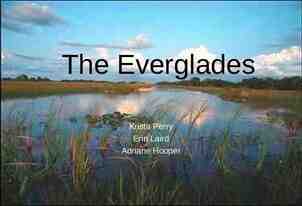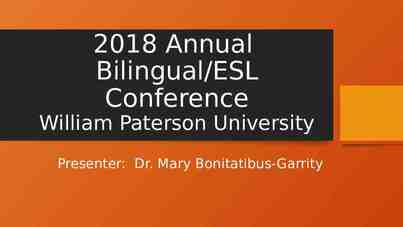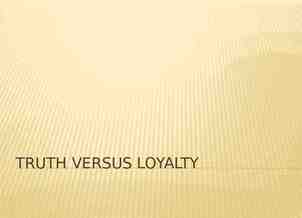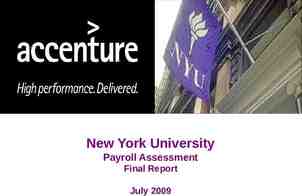CSWA Town Hall: Designing a 21st Century Astronomy Career Track by
14 Slides415.73 KB
CSWA Town Hall: Designing a 21st Century Astronomy Career Track by Joan Schmelz & CSWA
CSWA Joannah Hinz (2007 - 2010) Ann Hornschemeier (2009 - 2012) Joan Schmelz Chair (2009 - 2012) Univ. of Memphis Dept. of Physics Memphis, TN 38152 (901) 678-2419 Fax: (901) 678-4733 [email protected] George Jacoby (2009 - 2012) Hannah Jang-Condell (2006 - 2012) Don Kniffen (2009 - 2012) Michele Montgomery (2008 - 2011) Marc Postman (2009 - 2012) Wal Sargent (2007 - 2010) Caroline Simpson (2007 - 2010)
CSWA Website: http://www.aas.org/cswa/ STATUS: http://www.aas.org/cswa/STATUS AASWOMEN: http://www.aas.org/cswa/AASWOMEN Blog: http://womeninastronomy.blogspot.com/ Facebook
Is Your Institution “FamilyFriendly?” Is there a family leave policy? Is there nearby affordable childcare? How important are things like flexible hours? the option to stop the tenure (or equivalent for non-academic positions) clock?
The Example “Family Friendly Benefits and Programs at STScI” see the “What's New” section of the CSWA homepage: http://www.aas.org/cswa/ Does your organization have a brochure like this where all the familyfriendly benefits and programs are described clearly and concisely? Would your HR department be willing to create such a brochure if they don’t already have one? Do you think it would be useful? How do the STScI policies compare with those at your organization? As we look forward to designing a 21st century view of what an astronomy career track should look like, what are the policies that should form the benchmark of a family-friendly workplace?
Is Your Institution “FemaleFriendly?” If the percentage of women at all levels is typical, is that good enough, or is it only the first step? If there are no senior women at the highest level, can a place really be femalefriendly? How important are role models and mentoring?
The Numbers* Grad enrollment in US astro depts has risen from 25% female in ‘97 to 30% in ‘06 (NSF-NIH Survey of Grad Students & Postdocs in S&E) % of Astro PhDs earned by women in the US has increased from 20% in ‘97 to 30% in ‘06 (NSF Survey of Earned doctorates) For past 20 years, 30% of prize postdoc fellowships in astro have gone to women (Hubble, Spitzer, Chandra, Fermi, Einstein, NRAO, Jansky) % of women faculty at stand-alone astro depts in 2006 was 28% (assist. prof), 24% (assoc. prof), and only 11% (full prof). *Thanks to the Astro2010 DEM study group for pointing us to this stat
The Numbers* Grad enrollment in US astro depts has risen from 25% female in ‘97 to 30% in ‘06 (NSF-NIH Survey of Grad Students & Postdocs in S&E) % of Astro PhDs earned by women in the US has increased from 20% in ‘97 to 30% in ‘06 (NSF Survey of Earned doctorates) For past 20 years, 30% of prize postdoc fellowships in astro have gone to women (Hubble, Spitzer, Chandra, Fermi, Einstein, NRAO, Jansky) % of women faculty at stand-alone astro depts in 2006 was 28% (assist. prof), 24% (assoc. prof), and only 11% (full prof). *Thanks to the Astro2010 DEM study group for pointing us to this stat
The Numbers* Grad enrollment in US astro depts has risen from 25% female in ‘97 to 30% in ‘06 (NSF-NIH Survey of Grad Students & Postdocs in S&E) % of Astro PhDs earned by women in the US has increased from 20% in ‘97 to 30% in ‘06 (NSF Survey of Earned doctorates) For past 20 years, 30% of prize postdoc fellowships in astro have gone to women (Hubble, Spitzer, Chandra, Fermi, Einstein, NRAO, Jansky) % of women faculty at stand-alone astro depts in 2006 was 28% (assist. prof), 24% (assoc. prof), and only 11% (full prof). *Thanks to the Astro2010 DEM study group for pointing us to this stat
The Numbers* Grad enrollment in US astro depts has risen from 25% female in ‘97 to 30% in ‘06 (NSF-NIH Survey of Grad Students & Postdocs in S&E) % of Astro PhDs earned by women in the US has increased from 20% in ‘97 to 30% in ‘06 (NSF Survey of Earned doctorates) For past 20 years, 30% of prize postdoc fellowships in astro have gone to women (Hubble, Spitzer, Chandra, Fermi, Einstein, NRAO, Jansky) % of women faculty at stand-alone astro depts in 2006 was 28% (assist. prof), 24% (assoc. prof), and only 11% (full prof). *Thanks to the Astro2010 DEM study group for pointing us to this stat
Good News/Bad News The good news: the Grad Student – Postdoc joint of the leaky pipeline does not appear to be leaking! The bad news: the faculty pipeline continues to leak. Benchmark: If the percentage of women postdocs at your institution is significantly lower than 30%, then there may be a problem
Good News/Bad News The good news: the Grad Student – Postdoc joint of the leaky pipeline does not appear to be leaking! The bad news: the faculty pipeline continues to leak. Benchmark: If the percentage of women grad students and postdocs at your institution is either significantly or consistently lower than 30%, then there may be a problem.



















